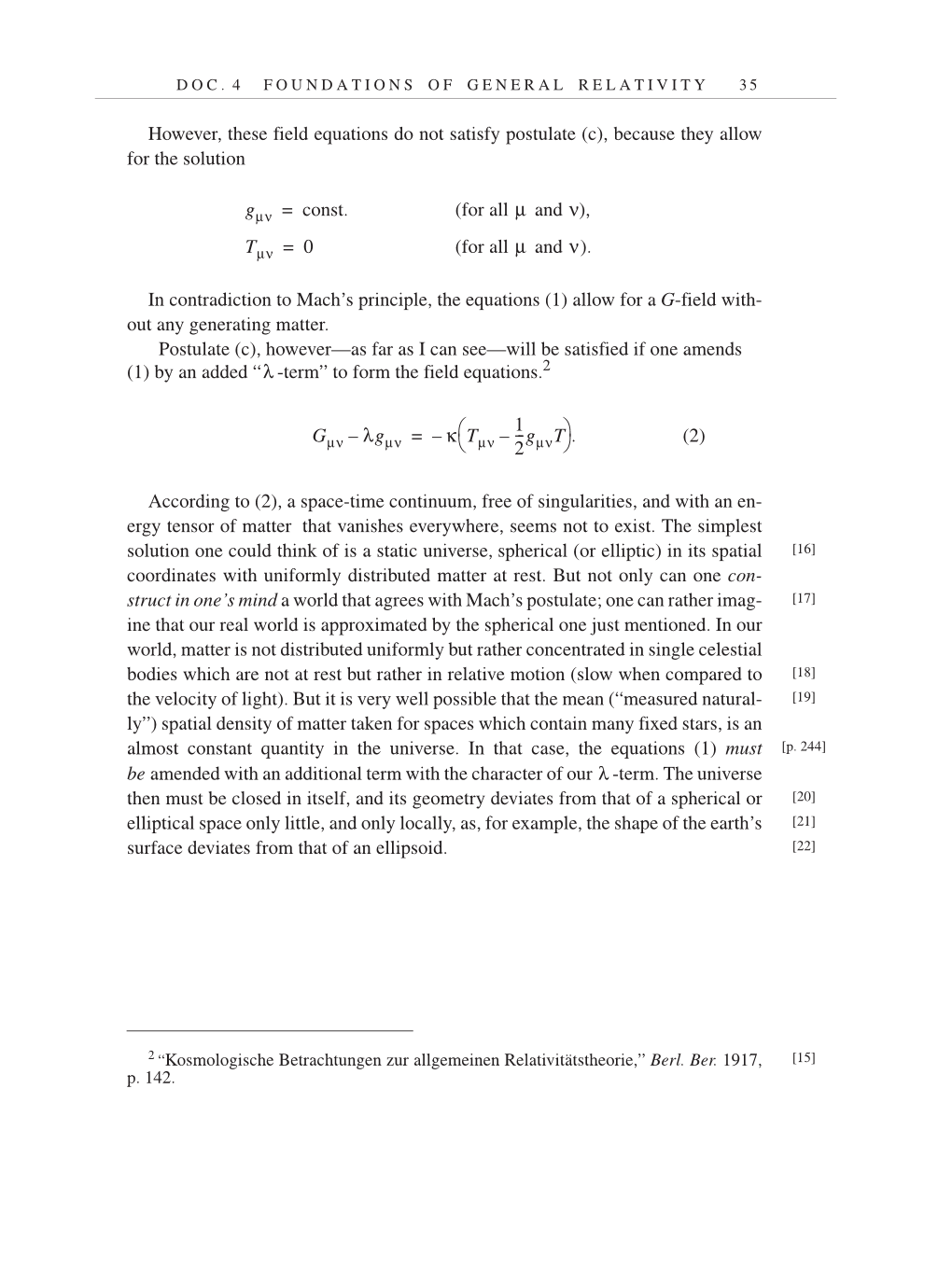D O C . 4 F O U N D A T I O N S O F G E N E R A L R E L A T I V I T Y 3 5
However, these field equations do not satisfy postulate (c), because they allow
for the solution
In contradiction to Mach’s principle, the equations (1) allow for a G-field with-
out any generating matter.
Postulate (c), however—as far as I can see—will be satisfied if one amends
(1) by an added “ -term” to form the field
equations.2
(2)
According to (2), a space-time continuum, free of singularities, and with an en-
ergy tensor of matter that vanishes everywhere, seems not to exist. The simplest
solution one could think of is a static universe, spherical (or elliptic) in its spatial
coordinates with uniformly distributed matter at rest. But not only can one con-
struct in one’s mind a world that agrees with Mach’s postulate; one can rather imag-
ine that our real world is approximated by the spherical one just mentioned. In our
world, matter is not distributed uniformly but rather concentrated in single celestial
bodies which are not at rest but rather in relative motion (slow when compared to
the velocity of light). But it is very well possible that the mean (“measured natural-
ly”) spatial density of matter taken for spaces which contain many fixed stars, is an
almost constant quantity in the universe. In that case, the equations (1) must
be amended with an additional term with the character of our -term. The universe
then must be closed in itself, and its geometry deviates from that of a spherical or
elliptical space only little, and only locally, as, for example, the shape of the earth’s
surface deviates from that of an ellipsoid.
(for all and
(for all and
2
“Kosmologische Betrachtungen zur allgemeinen Relativitätstheorie,” Berl. Ber. 1917,
p. 142.
[15]
gμν const. = μ ν),
Tμν 0 = μ ν).
λ
Gμν λgμν – κ⎝ Tμν
1
2
-- -
gμνT⎠. –
⎛ ⎞
– =
[16]
[17]
[18]
[19]
[p. 244]
λ
[20]
[21]
[22]
